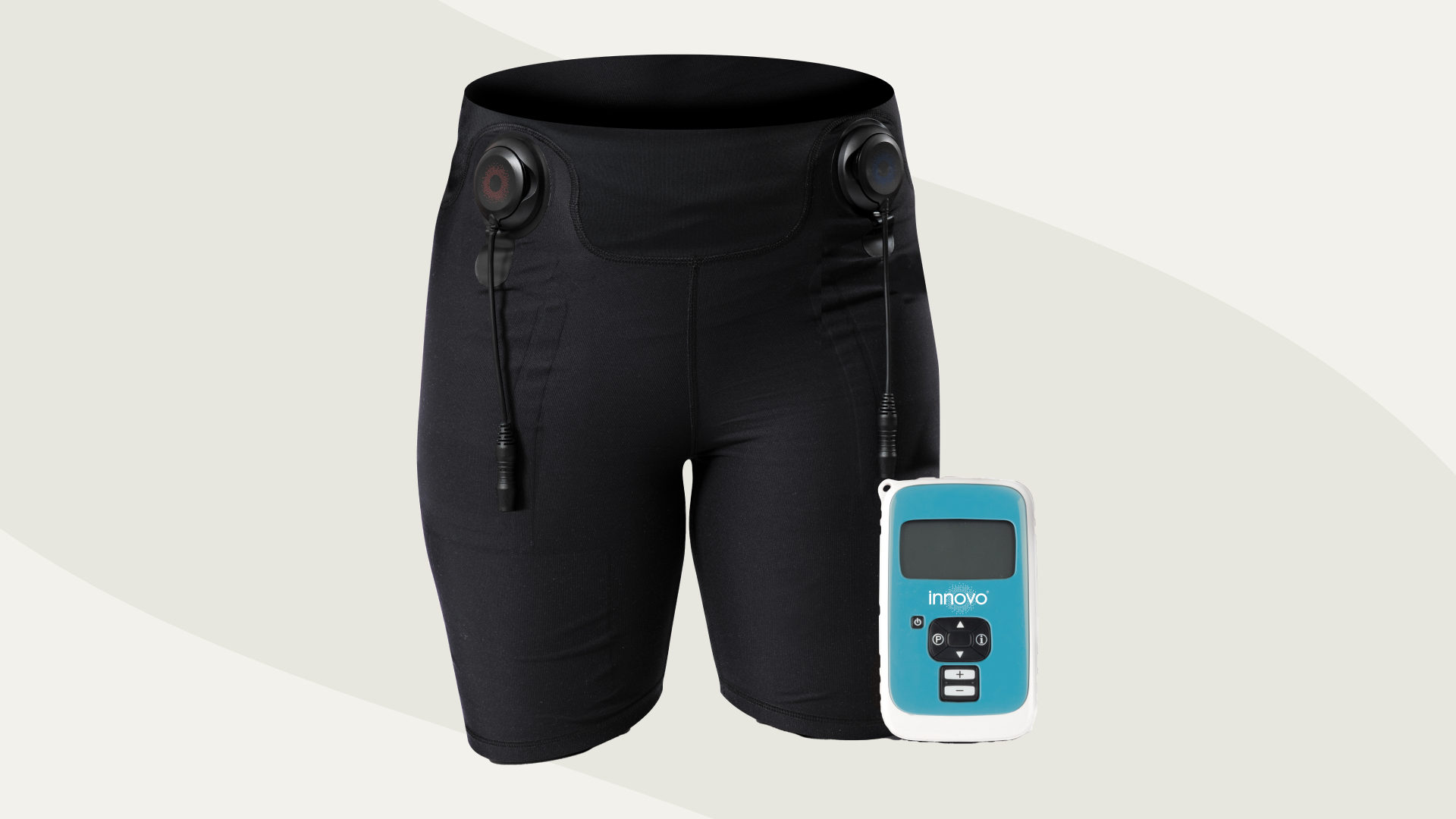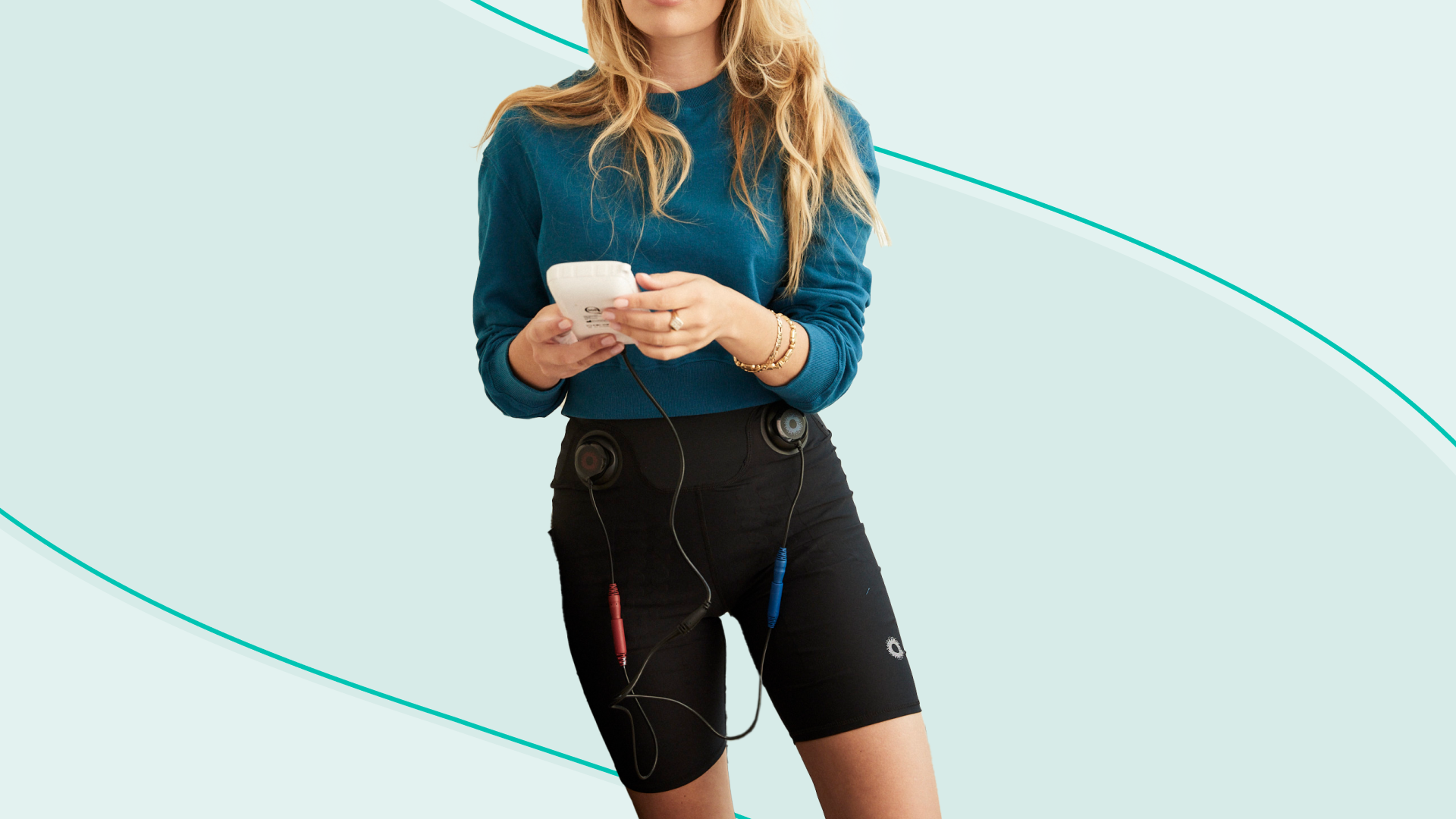The Story
You know that feeling when you laugh, sneeze, exercise, or cough, (or any of the above after having a baby) and realize a little pee came out? If so, you’re not alone. One in three women deal with bladder leaks.
But it doesn’t have to be that way — especially because a lot of it just comes down to strengthening your pelvic floor muscles (don’t worry, that doesn’t mean starting a new gym routine). So our friends at INNOVO are helping us bring you the 411 on bladder leaks, because they know a thing or two about getting rid of ‘em. (OK, understatement: their new smart shorts can eliminate leaks in just 12 weeks.) Let’s get into it…
Back to Basics: What are Bladder Leaks or Stress Urinary Incontinence (e.g. SUI)?
In medical lingo, bladder leaks fall under the broad umbrella term of “urinary incontinence.” And there are two main types:
Stress incontinence is when your bladder leaks because you’re doing something physical (like jumping, walking, having sex, or even sneezing, laughing or coughing) that puts pressure on it. Nearly 40% of women deal with stress incontinence at some point in their lives. SUI is the most common type of incontinence.
Urge incontinence (sometimes called “overactive bladder”) is when you feel a sudden urge to pee and you just can’t hold it in — for no apparent reason. Most people’s bladders can hold 2 cups of urine, and they start feeling like they need to pee once their bladder is holding about 1 cup. For people with urge incontinence, the bladder contracts randomly, no matter how much urine it’s actually holding. So that “gotta go” feeling comes on strong and out of nowhere. So fun.
So What Causes Stress Urinary Incontinence?
A weak pelvic floor. In some cases, things like neurological issues and UTIs can cause leaks. But the biggest culprit behind bladder leaks? A weak pelvic floor. The muscles that support your pelvic organs can get pretty worn down because of common stressors, like pregnancy or age (more on those below). But weak pelvic floor muscles can be an issue for any woman, anytime, and the problem gets worse over time if you don’t deal with it.
The good news? No woman has to accept a weak pelvic floor. Kegel exercises — done the right way — can make the area stronger than ever. And that can help make bladder leakage a thing of the past. Remember those smart shorts we were telling you about? That’s where they come in. INNOVO’s at-home technology literally does kegels for you. As in, 180 perfect Kegels in just 30 minutes.
Aaaand What are Common Things That Weaken The Pelvic Floor?
Pregnancy and childbirth. Stress incontinence is caused when the pelvic tissues and muscles that support your bladder and the urethra (AKA the tube that takes urine out of your body) become weak. And pregnancy and childbirth can take a real toll.
Age (helloooo, perimenopause and menopause). As people age, their bladder muscles become less capable of storing urine. That’s why urinary incontinence is more common in women over 50. The hormonal changes that happen during perimenopause and menopause can also play a role. The body produces less estrogen, a hormone that helps keep the lining of the bladder and urethra strong. So prevention is key.
High Intensity Exercise. Things like high-impact classes or long distance running are more likely to place a strong downward strain on the pelvic floor and, over time, stretch and weaken the pelvic floor muscles.
What You Can Do if You Have Bladder Leaks…
Strengthen your pelvic floor — the right way. Kegels are the gold standard of pelvic floor exercises, because they’re simple but effective. Imagine tightening the muscles of your pelvic floor as though you’re sitting on a blueberry and trying to lift it. Once you feel your muscles rise, hold for 10 seconds. Then relax and release.
Sound simple? Sure. But like any exercise, kegeling the right way is more nuanced than it seems, and form matters. First, you have to actually find the right pelvic floor muscles to tighten and release (not easy when you can’t see them). Many women end up using the wrong muscles, contracting their butt or inner thighs instead. At best, that means they’re not really doing much. Worse, kegeling the wrong way or too forcefully can actually make things worse and lead to unintended consequences, like painful sex.
Like we said, have no fear: INNOVO was created to strengthen and re-educate your pelvic floor muscles, eliminating bladder leaks. They’re smart shorts you wear for 30 minutes a day that, with the push of a button, automatically engage your pelvic floor to do 180 perfect kegels every time you put them on. Basically, they totally eliminate the guesswork and do your kegels for you.

It’s 100% non-invasive (unlike other solutions that require insertion), no prescription or doctor visit needed (yep, you can order ‘em online). And 87% of women who use INNOVO were leak-free in 12 weeks or less. Take it from Jamie Hess, wellness mentor of @NYCFITFAM who started leaking after she gave birth to her second kid. She was training for a half marathon when she said she “literally peed in [her] pants” and was worried there wasn’t anything she could do. That’s when she found INNOVO. “It was easy,” she said. “After 12 weeks, I was leak free. I was able to get back to living life without leaking and get back to running.
Talk to your primary care doctor or OB-GYN. Urinary incontinence is common, but it’s not something anyone should have to put up with just because they became a parent or are getting older — or for any reason, really. If yours feels severe, speak up.
theSkimm
Bladder leaks are way more common than people realize — especially among women. But many people are still too embarrassed to speak up. Or they don’t know how to strengthen their pelvic floor. If these symptoms sound familiar, consider a solution like INNOVO that can do kegels for you. (Or talk to your doctor to get more info.) Sometimes, a bit of focused, effective exercise in the right places can make all the difference.
Subscribe to Skimm Well + Good
Sign up here to receive our wellness newsletter filled with actionable advice, expert-vetted content, product recs, and more — delivered directly to your inbox.

